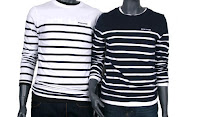There are five distinctive branches in textile engineering namely
1. Yarn manufacturing/Spinning,
2. Fabric manufacturing,
3. Garment/Apparel manufacturing,
4. Wet processing.
5. Textile management.
Advance branches includes-
· Fashion design
· Technical textile
· Material science
1.Yarn manufacturing:
This branch consists the manufacturing process of yarn (thread) and the Study starts from the Fiber/Fiber-types, Characteristics, quality etc and ends in Packing of yarns. The processes includes Ginning, Bale opening, Mixing, Carding, Combing, Drawing, Operation in Speed frame, Operation in Ring frame, Twisting, Winding.
Ginning: Study of separation of fiber from seed (for cotton & some vegetable fiber)
Bale management: Bale making, opening, Lap making of fibers.
Mixing & Blending: Principles of incorporating different types and different quality of fiber together.
Carding: Heart of spinning. Principles of individualization of fibers, removing of neps, dirt’s etc. and making sliver.
Combing: Principle of making better quality yarn by combing operation.
Drawing & Doubling: Principle parallelization of sliver and passing two or more sliver together to form a single sliver.
Operation in speed frame: Study of making roving.
Operation in Ring Frame: Study of making yarn from roving.
Twisting: Study of making a single yarn by twisting to or more yarn.
Winding: Study of winding of yarn in packages (cop, cone spool etc.)
Yarn manufacturing/Spinning
2.Fabric Manufacturing:
This branch consists the manufacturing process of fabric, Lace, Braid, Conveyor belt ,Net, Rope from yarn by weaving / knitting or bonding or by other mechanism by using yarn/fiber. The branch gives its attention in types of fabric, fabric design, Sizing, Warping ,Machines for making different types of etc.
Sizing: Study of applying sizing materials (mainly starch) in yarn to impart strength in yarn.
Warping: raping yarns in warping beam
Weaving : Study of making fabric by interlacement of yarns in looms
.
Knitting: Study of making fabric by intermeshing of yarn in knitting machines.
Fabric manufacturing
3.Garment/Apparel manufacturing:
This branch consists of the manufacturing process/making of garment from fabric by cutting, sewing etc.
Main subject matter of this branch are types of garments, Garment design, production sequence, Pattern making, Marker making, Fabric spreading, Cutting, Sewing etc.
Apparel manufacturing
4.Wet processing :
This branch consists of the chemical processing of fibers and fabrics,Dyeing Printing and Finishing of Textile materials.
Main subject matters of this stream are types of chemical class of different fibers,Polymerisation of fibers,types of dyes/pigments and their application procedure in textile substrate,Printing techniques in fabrics,Techniques of making flame retardant,Waterproof,Dirtproof,Antimicrobial fabrics etc ,water treatment for textile proceesing,preparation of textile material for dyeing/printing/finishing.
 |
| Dyeing |
 |
| Printing |
5.Textile Management:
This branch consists of the study of management and maintenance of textile trade and technology as well as production management and merchandizing of textile goods as local or nationwide perspective.
Fashion design:
This stream teaches
apparel design, flat pattern making, draping, sewing techniques, computerized pattern design, knitwear design, childrenswear, menswear, swimwear and intimate apparel, bridal, haute couture and tailoring, licensing, fitting techniques, fashion history, fashion business, etc.fashion designers work as fashion consultants, fashion designers, fashion assistants, sketching assistants, merchandising executives, illustrators, stylists, and fashion coordinators.
Fashion design
Technical Textile:
This branch gives its attention to the production of functional textiles rather than textiles for aesthetic properties such as textiles for medical purposes,Protective clothing etc.


















































